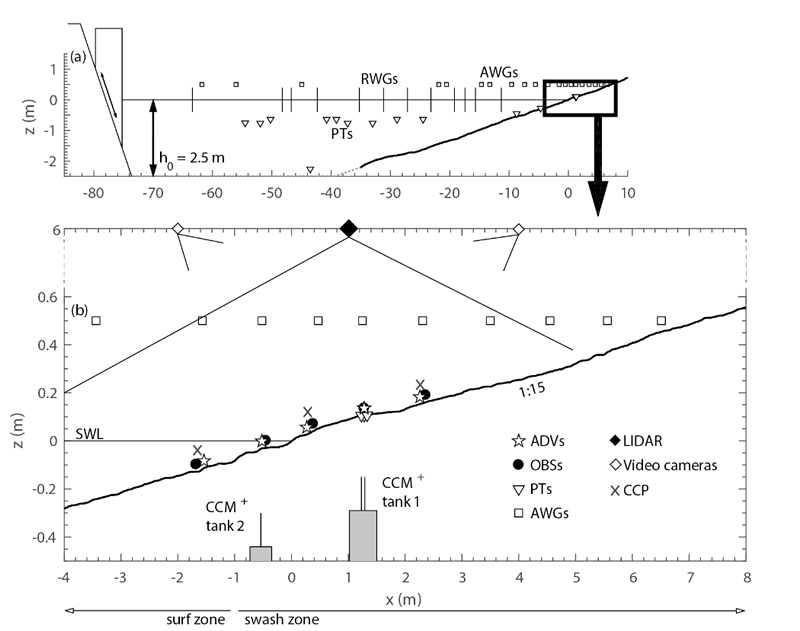S. Dionísio António1*, J. van der Werf1,2, J. van der Zanden3, B. Vermeulen1, J.S. Ribberink1, S.J.H. Hulscher1
1 University of Twente This email address is being protected from spambots. You need JavaScript enabled to view it., This email address is being protected from spambots. You need JavaScript enabled to view it., This email address is being protected from spambots. You need JavaScript enabled to view it., This email address is being protected from spambots. You need JavaScript enabled to view it.
2 Deltares, This email address is being protected from spambots. You need JavaScript enabled to view it.
3 MARIN, This email address is being protected from spambots. You need JavaScript enabled to view it.
Introduction
The swash zone is the region near the shoreline that is alternatively covered and exposed by incident waves running up and down the beach face. Swash zone processes determine whether sand is stored on the upper beach or is transported offshore, and thus strongly affect shoreline evolution. Measurements of swash hydrodynamics and sediment concentrations are needed to be able to quantify and understand sediment fluxes near the shoreline. The Shaping The Beach research project aims to develop a new parameterization for sand transport in the swash zone, through a combination of detailed laboratory experiments and advanced numerical modeling.
Research plan
The present PhD project focuses on the hydrodynamics and sand transport processes in the swash zone through a series of laboratory experiments in the large-scale CIEM wave flume. This research aims to improve the understanding of swash zone sand transport processes, in particular the role of cross-shore sand advection. These experiments will shed new detailed insights in bedload and suspended sand transport processes in the swash, and also in net sand transport rates for a wide range of swash conditions. The results from these experiments will be used to develop a new practical parameterisation for swash zone sand transport for application in morphodynamic models.
Methods
The laboratory experiments will be conducted in the large-scale CIEM wave flume at the Universitat Politècnica de Catalunya (Barcelona, Spain). Two types of experiments will be conducted: the “TRANS” experiments focusing on quantifying the net sand transport across the swash zone for a wide range of swash conditions; and the “PROC” experiments focusing on the hydrodynamic and sand transport processes across the inner surf and swash zone. These experiments involve a series of sophisticated instrumentation such as LIDAR and conductivity concentration sensors to measure sheet-flow concentrations and velocities (CCM+, CCPs) (Figure 1).

Figure 1 Preliminary experimental set-up in the Barcelona large-scale wave flume.
Acknowledgements
Shaping The Beach (2018-2023) is a NWO-TTW funded research project (no. 16130), with in-kind support by Deltares.










